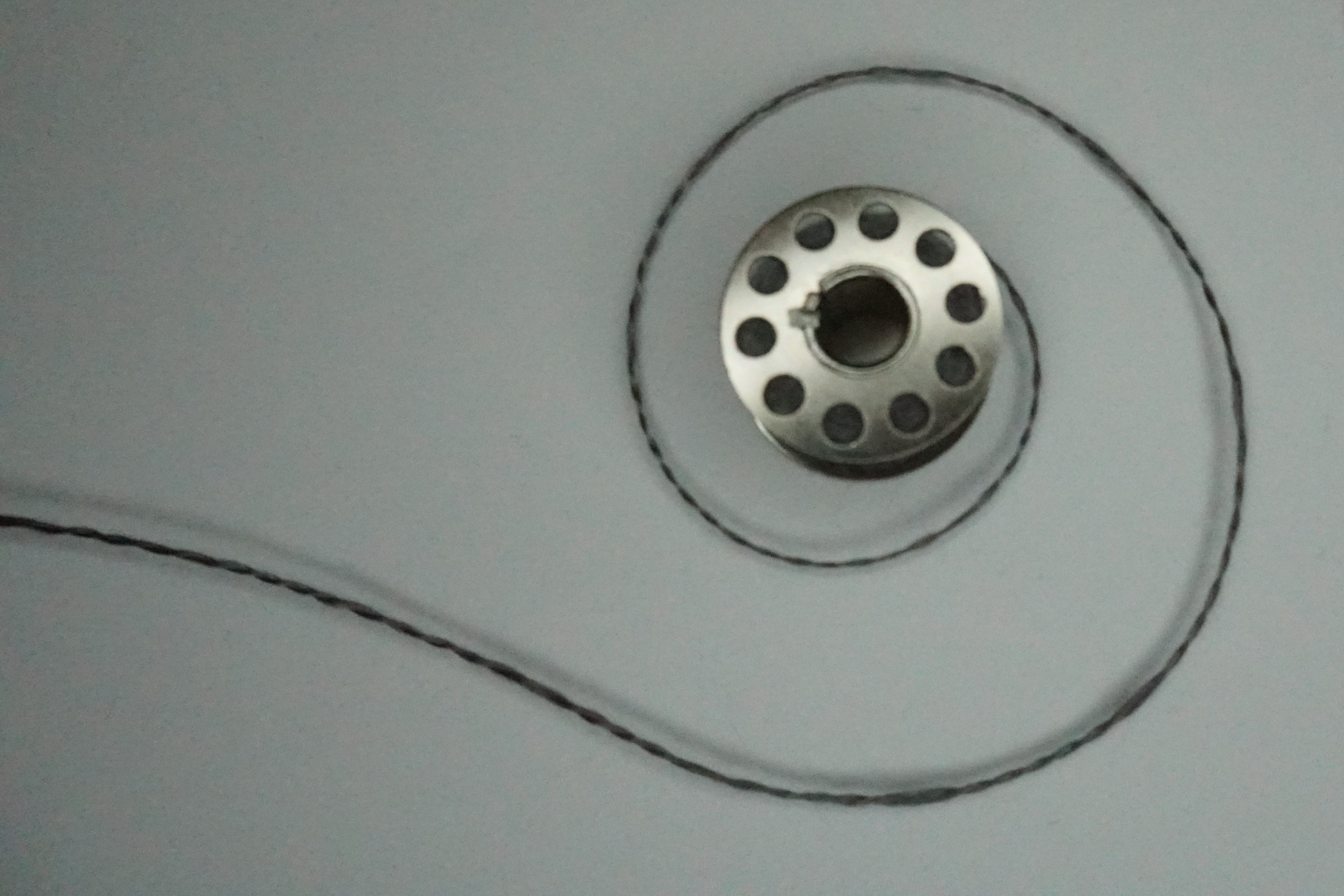WHAT IS CONDUCTUVE THREAD?

Conductive thread is commonly stainless steel or silver-coated threads that carry a current similar to how wires will carry a current. It is possible to use Conductive thread in many different ways. Conductive thread can be threaded through a hand sewing needle and hand-stitched. Or wind a bobbin of Conductive thread and machine sewed into a project or garment. Conductive thread can even be embroidered into a garment. Finally, the best part about conductive thread is that it doesn’t need to be soldered to the components.
Deciding between the two types of threads is sometimes done best by trial and error. The Stainless Steel threads have about 28 ohms per foot. In comparison, the silver-coated varies a lot more from different batches. You can always check with an Ohms meter. I commonly use stainless steel conductive thread.
Conductive thread and sewable electronics combined is a great way to get started in the world of wearable technology.
TIPS AND TRICKS
Hand Sewing with Conductive Thread
When sewing with conductive thread, there are a few different things to note. The thread itself frays easily. If you are struggling with threading the needle or the thread is winding and catching on itself, try adding a little beeswax to help smooth. The thread will also break easily. Using shorter strands can help prevent unnecessary twisting or weakening of the thread at the needle’s eye.
Insulating
The conductive thread is entirely uninsulated. Ensure that you plan the project and have no stitching lines crossed. If you must have the lines crossed, you will need to make sure that there is an insulated barrier between the two lines. This barrier can be thicker fabric or fabric paint. Fabric paint is also commonly used at the end of the project to finish detailing and fully insulate the conductive thread. Another option is electrical tape wrapped around one of the overlapping sections. The electrical tape will create a barrier, but the taped sections will not be able to be seen through the fabric. Using electrical tape will create a different look to the final project, so make sure you are happy with how you choose to insulate the thread.
When the thread is left uninsulated in projects, short circuits can occur. A short circuit is when the current finds a lower path of resistance to achieve its complete circuit. This is resulting from unintended contact between components, connections, or thread (wires).
Machine Sewing
When sewing with a Sewing Machine and stainless steel thread, I recommend placing the conductive thread in the bobbin and having a regular thread on top. Before you begin sewing, make sure to pull a length of the thread so that you can attach it to the actual component after finishing with the machine. Follow the pre-planned route for the conductive thread. Then, at the end, make sure to leave a length of thread to attach to the component.
Grab the wearable technology starter tool checklist for free!!!
Other fun components to begin sewing with Conductive Thread
See some of the other fun projects you can create with conductive thread and some sewable electronics!!! Like these Light-up Flower earrings or these Light-up Earrings!!!!
